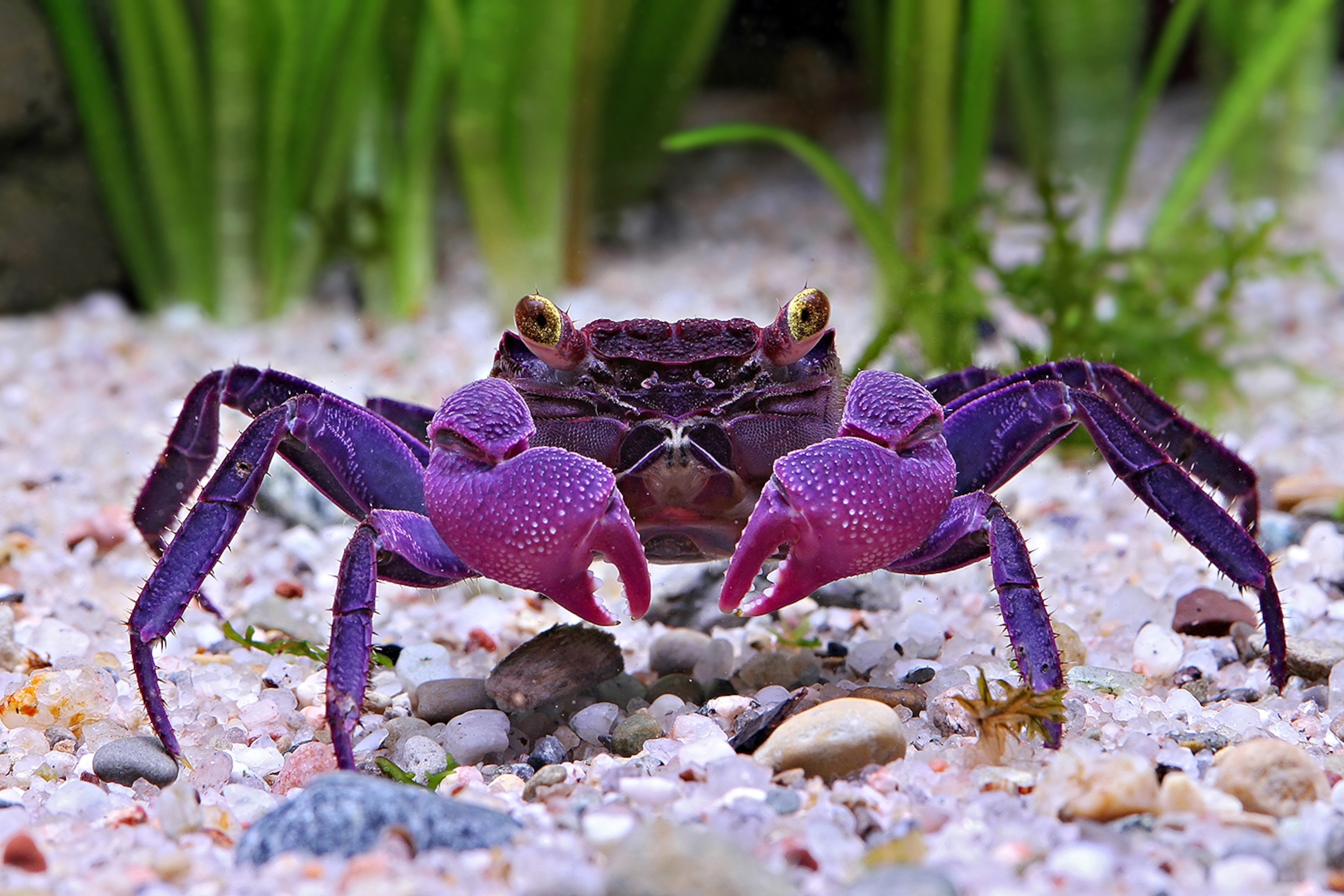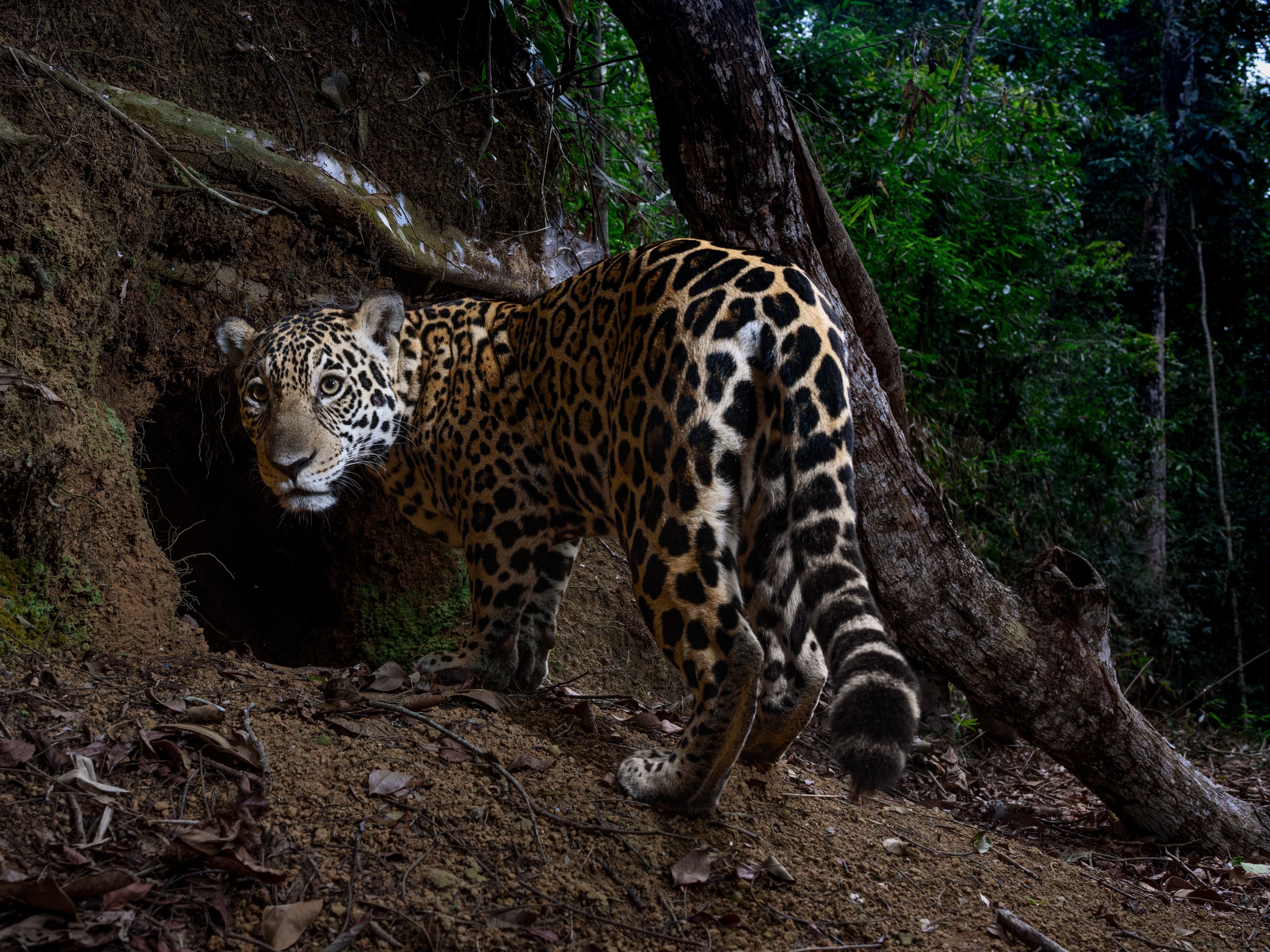
Two Vampire Crab Species Found, Are Already Popular Pets
Spooky-eyed crustaceans sold as aquarium pets are two previously unknown species from Indonesia, a new study says.
Vampire crabs, so named because of their glowing yellow eyes, have become popular as pets, but the origin of some of these spooky-looking crustaceans has been cloaked in mystery.
Until now.
Now researchers have traced the freshwater crabs back to their wild source in Southeast Asia—and report that the two most sought-after species are new to science.
The newly described species, Geosesarma dennerle and Geosesarma hagen, were found in separate river valleys on the Indonesian island of Java (map).
"These crabs are kind of special because they've been around in the pet trade for ten years, but no one knew where they come from," said study co-author and professional aquarist Christian Lukhaup of Waiblingen, Germany.
Scientists have identified other vampire crab species before, including those in the aquarium trade, but the newfound species are the most common pets, he said.
The new vampire crab G. dennerle is a deep purple with a creamy splotch on its back. G. hagen catches the eye with its bright orange shell and claws. (Also see "Pictures: New Purple Crab Species Found.")
These crabs' blazing eyes and spectacular colors explain their attraction to aquarists.
"Dealers working in Southeast Asia and other parts of the world know what their clients are looking for in terms of colors," said study co-author Christoph Schubart, of Germany's Regensburg University's Institute of Zoology.
"They start collecting in areas where scientists may not have made any expeditions so far, and suddenly the market is formed with some animals that no one has ever given a name," said Schubart, whose study appeared in January in the Raffles Bulletin of Zoology.
Vampire (Crab) Hunter
Measuring less than an inch wide, vampire crabs are also an ideal size for keeping in a small tank, said Lukhaup.

The vampire crab hunter of the team, Lukhaup, fittingly, was born in Transylvania, home to the mythical Dracula. (See "Archaeologists Suspect Vampire Burial; An Undead Primer.")
He used his contacts in the aquarium trade to scout out collectors who might know where the crabs came from.
"There were a lot of false rumors because people don't want other collectors to go there," he said.
Lukhaup, who has helped uncover the wild origins of various shrimps and other freshwater crustaceans sold as pets, finally tracked the crabs down in central Java.
Communicating With Color
Schubart suspects there are many more vampire crab species yet to be described on Indonesia's islands.
Since these freshwater crabs don't use the ocean as part of their life cycles and tend to stay put, many of Indonesia's islands have their own vampire crab species, Schubart explained. (See National Geographic's 13 scariest freshwater animals.)
These crabs' amphibious lifestyles also influenced the evolution of their bright coloration. On land, "visual communication becomes much more important," he said.
"There's much more emphasis on color and visual cues rather than chemical cues, as used in the water."
Vulnerable Vamps
The two new vampire crab species are probably each confined to a single watershed, making them particularly vulnerable to collectors, the study team warned. (See "Do You Know Where Your Aquarium Fish Come From?")
"For the local collectors, it's their living," Schubart said. "They just catch what they can get and export it."
Lukhaup hopes that in the future commercial breeding will help prevent wild populations from being wiped out by the vampire crab craze.
Some private enthusiasts are breeding the crabs, he said, but most still come from Indonesia.





